When mounting your wheels you may have come across the term: Torque.
But how does torque work and what exactly is it?
Let’s find out!
Car wheel torque is the tightness of the lugnuts. This tightness is measured in an amount called foot-pounds. The foot-pounds are related to the amount of weight required to move an object a certain distance.
Depending on your car’s lugnut tightness, it can be set as high as 90 pounds or lower than 30 pounds.
Table of Contents
Check Also: Do electric cars have more torque than gas-driven cars?
Even wheel lug nut distribution helps the tires to stay balanced and even.
It helps ensure every part of the tire is holding up equal amounts of stress.
If you do not follow a specific pattern or technique for tightening your lug nuts, it can lead to wear on certain parts of the tire and uneven stress distribution.
There are several factors that you need to consider when using a torque wrench.
For example, you need to make sure that the wrench is properly calibrated, as this will affect the accuracy of the measurements.
A professional recalibration is necessary if the calibration is not accurate.
It is also important to check the condition of your lug nuts and other hardware before applying any torque, as they may be damaged or worn out and could require replacement.
Additionally, it is essential to use the correct amount of force when tightening your wheel lugs to prevent over-tightening or under-tightening them.
Finally, it is important to stay aware of any changes in conditions such as ambient temperature or humidity levels, which can impact how much force is required for proper torque settings.
The vehicle manual outlines what the torque of car wheel nuts should be.
However, as a rule of thumb, most car wheel nuts should be torqued to between 80 and 110 foot pounds.
Lug nuts are torqued according to a measurement called foot-pounds. The torque you use depends on the size of the lug nuts.
Lugnuts that are 7/16 inches should be torqued 70 to 80 foot-lbs.
1/2 inch 75 to 85 torque pounds, and 9/16 inch 135 to 145 torque pounds.
A torque wrench or torque stick helps you to get the ideal torque.
It is important not to overtighten the wheel nuts, as this can damage the wheel or the threads on the nuts.
Under tightening the wheel nuts can also be dangerous, as it can cause the wheels to come loose while driving.
When tightening the lugs, be sure they are free from oil or grease.
The best way to ensure that you have the correct torque for your car’s wheels is to consult the owner’s manual.
Each car model has different specifications, and it is important to adhere to these in order to maintain optimal performance and safety.
If you are unsure about how to properly use a torque wrench or other tools, it is best to bring your vehicle to a professional mechanic who can help you adjust the settings as needed.
The amount of torque that your car’s wheels need will depend on a variety of factors, including the size of the tires, the type of material they are made from, and the weight of the vehicle.
It is important to consult with a professional mechanic or an experienced driver in order to determine the optimal setting for your particular car model.
With proper care and maintenance, you should be able to achieve optimal performance from your vehicle while also keeping yourself safe on the road.
Yes, it is possible to overtighten your car’s wheel nuts. T
his can damage the wheel or the threads on the nuts, and it can also make it difficult to remove the nuts in the future.
To avoid over-tightening your wheel nuts, it is important to follow the manufacturer’s specifications for torque carefully.
Additionally, it is a good idea to periodically check the torque on your wheel nuts, especially if you are driving in conditions that can lead to increased vibration or stress.
Torquing new wheels is important as the wheels adjust to the car.
The general rule is to torque your new wheels after the first 50 miles or 100 miles.
If you drive in adverse conditions, such as on dirt roads or in heavy rain, it is a good idea to check the torque more frequently.
Overtightening leads to stretching the wheel studs. These are the metal posts or bolts the wheel is attached to.
Due to this stress, the stud may potentially break. This breakage may lead to tire damage. Also, it could strip the bolts. There is even the potential that the brake rotors could warp.
Brake rotors may be affected by too much torque. The shaking caused by the vehicle potentially damages the entire brake system.
In addition, the vibration caused by an over-tightened wheel could even damage other parts of the car or loosen it up.
This can impact how effectively your vehicle is able to brake and steer, putting you at risk of accidents on the road. It is therefore important to make sure that your wheels are properly torqued to avoid these risks.
If a car has too little torque, it can impact its performance on the road. It will affect the balance and performance of the wheels.
They may wobble, which causes issues for the entire car.
The vehicle may not be able to accelerate or brake effectively, which can lead to collisions or other accidents.
Additionally, car parts such as the wheels and brakes may become damaged over time due to lack of proper torque, potentially increasing repair costs.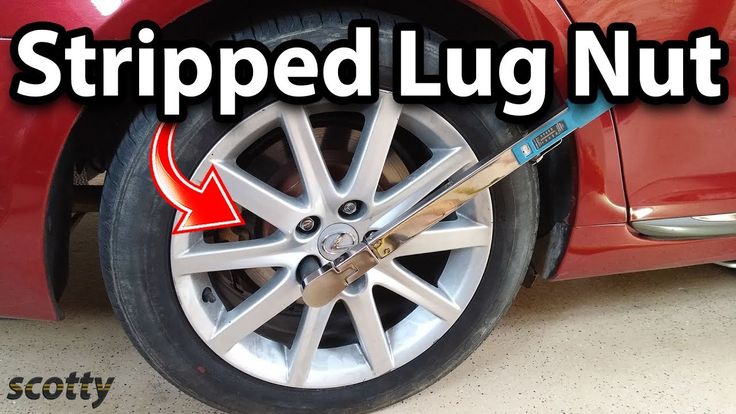
It is not recommended to use an impact wrench to fasten your car’s wheel nuts. This can damage the threads on the nuts or strip them completely.
It is best to use a torque wrench or a torque stick when tightening wheel nuts, as this will help you achieve the correct amount of torque.
There is no set frequency for checking the wheel nut torque, as it will depend on a number of factors, including how often you drive and what type of road conditions you typically encounter.
Some experts recommend checking the torque at least once a year, or any time that you change your tires or perform other routine maintenance on your vehicle.
If you notice any signs of damage to your wheels or wheels nuts, such as excessive wear or vibration when driving, it is important to bring your car in for an inspection right away.
With regular care and attention, you can help ensure optimal performance from your vehicle while also keeping yourself safe on the road.
Yes, mechanics should always check the wheel nut torque when servicing a vehicle.
This is because the correct amount of torque is necessary for the wheels to function properly and safely.
If the nuts are not correctly torqued, it could lead to problems such as difficulty steering, increased wear and tear on the tires, and decreased performance overall.
In some cases, it may even be dangerous to drive with improperly tightened wheel nuts.
There are a number of different tools that mechanics can use to test the torque of a car’s wheel nuts. These might include specialized wrenches or digital torque gauges, which are connected either directly to the nuts themselves or to the car’s computer system.
The exact method used will depend on the type of wheels and other parts that your vehicle has, as well as its make and model.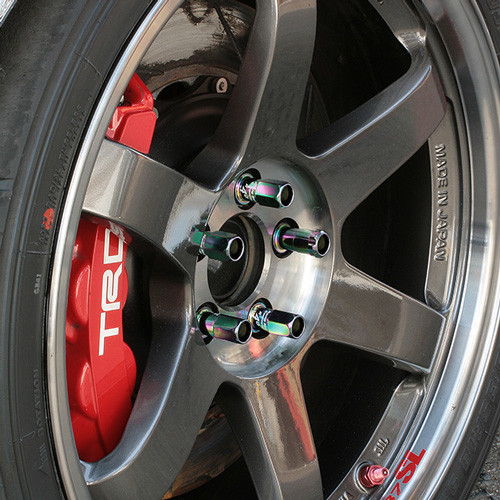
However, most mechanics will start by loosening each nut just slightly and then testing it with a torque wrench or gauge to determine what setting is required. Adjustments may need to be made several times before an accurate reading can be obtained.
Once this has been done successfully, the mechanic will then tighten each nut back up again according to the specified torque.
It is important to note that not all mechanics will have the same equipment or experience when it comes to testing wheel nut torque.
The right torque is important because it helps your car’s wheels to function optimally. It ensures that the wheels are properly attached to your car, allowing you to safely accelerate, steer, and brake.
It affects things like steering, handling, and braking, and can even affect the safety of your vehicle.
Without the right amount of torque, your car’s tires may not perform properly or could even become damaged.
For this reason, it is essential to make sure that your wheel nuts are fastened to the correct torque settings at all times.
Without the right amount of wheel torque, your car may not perform as well or be as safe on the road.
https://itstillruns.com/proper-torque-wheel-nuts-7356894.html
https://www.tirerack.com/tires/tiretech/techpage.jsp?techid=107
Was this article helpful?
Great!
Click to share...
Did you find wrong information or was something missing?
We would love to hear your thoughts! (PS: We read ALL feedback)
Name (not required)
Email (not required)
Message
Foot pounds is simply the unit of measure for torque. So, here we are looking at how much torque you need for loosening or tightening lug nuts.
So, here we are looking at how much torque you need for loosening or tightening lug nuts.
If you can use the right amount of torque, then it becomes easier to securely attach the wheel to the car using the lug nuts.
The typical range of foot-pounds for loosening lug nuts will be from 70 to 145-foot pounds. It all depends on the wheel stud size mostly indicated in inches and millimeters.
Here is a table you can use to match your stud size to know how much torque is needed to open the lug nuts.
It is advisable to use an impact wrench to get the right torque for various applications. Most of the impact wrenches will range from ½-inch up to ⅜-inch.
There is the choice of getting an air-operated or battery-operated model. It depends on your budget and ease of use.
Sometimes the person who attached the wheel to the car overtightened the wheel making it hard to use your wheel spanner to remove the wheel. Here you need an impact wrench to remove such lug nuts from the wheels.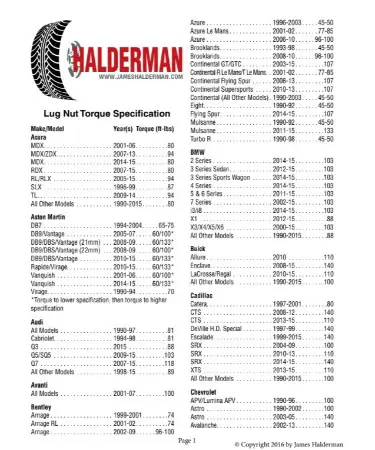
The car’s manual is also a nice resource for getting more information about torquing the lug nuts. Using the right specification will leave the car running right and also it is easier to remove the lug nut the next time it has to come off.
Also, keep in mind the torquing patterns too. The star pattern is often preferred to ensure that you can secure the wheel correctly.
Here is a video with more details on torquing lug nuts
It is vital to always consider the right amount of torque for ensuring that it actually works.
We have already mentioned a chart above for you to consider above. Such a chart helps you to see how much torque to use for loosening lug nuts.
The safest amount you can start with is using 80 to 100-foot pounds. Make sure you start slow with the torque and increase the torque when necessary.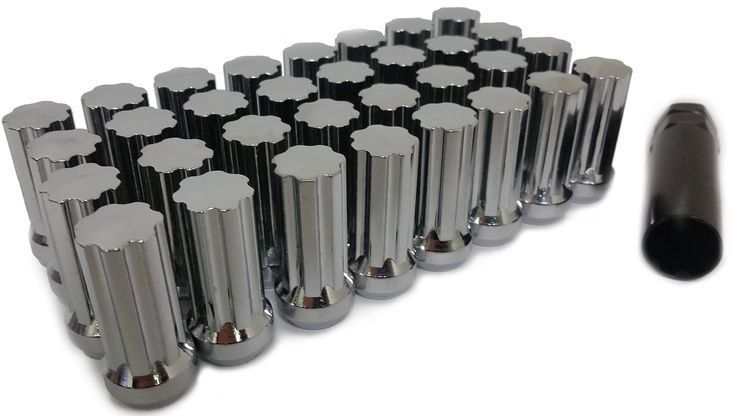
You should also not apply unnecessary torque when you have already tightened the lug nuts. The same applies when loosening as too much torque can easily break the lug nuts.
Ensure that you are also not stressing the lug nuts so much. This is especially when the nuts are rusted or older. You may have to add a penetrant to ensure that the lug nuts can become loose with ease.
Snapping off the lug nuts can make it tough to remove the lug nuts. That is why we still recommend applying gradual torque to the lug nuts.
An electric impact wrench can also be used for removing lug nuts. What is important is that you should always use a high rating for an impact wrench.
The higher rating for an electric impact wrench will make it easier to get the job done.
It may still be advisable to spray additional penetrating oil on these lug nuts for making them easy to remove. Give it a couple of minutes for the oil to penetrate and start loosening the lug nuts.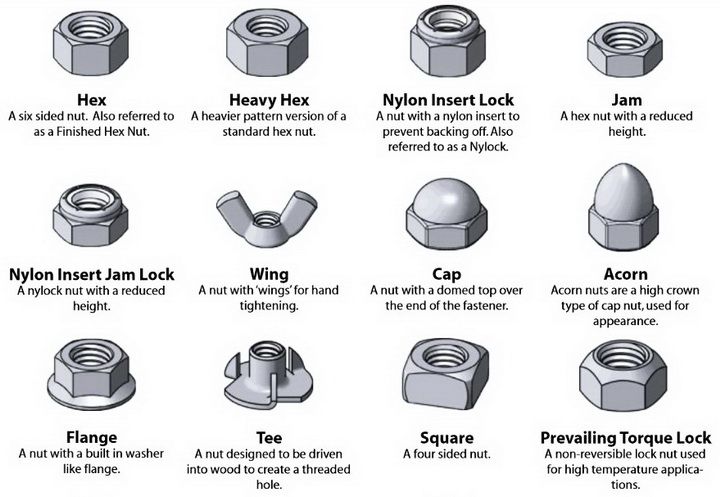
Try to loosen and tighten the lug nuts to loosen the lug nuts. This action will mostly break free the nuts.
Even if you are using an electric impact wrench, make sure you are not over-torquing. Use the chart above to ensure you do it right.
Have you ever applied up to 100-foot pounds to the lug nuts but they seem not to move? There might be a couple of reasons why the lug nuts are not loosening. Here is why
You may be intrigued to consider adding more torque to try and loosen the lug nuts. Such impact wrenches might be found at repair shops. So get your car there to have the lug nuts removed.
A breaker bar might also work, but it does not have the flexibility of an impact wrench.
This video should give you more tips on removing rusted lug nuts
It is vital to avoid ruining the wheels. This is especially when the lug nuts are over-tightened. The worst is when they are not tight enough.
This is especially when the lug nuts are over-tightened. The worst is when they are not tight enough.
It is possible to use it as it will have enough power to break the stubborn lug nuts. Just be careful not to use a lot of power at once. Add torque gradually.
Most lug nuts would have been tightened up to 100 ft-lbs. As such, having an impact wrench with a good capacity of around 500-foot pounds should make it easy to remove any type of lug nut.
You may use it, but it is not advisable to do so. This is because the impact wrench may easily strip the threads on the lug nuts if you apply too much torque at once.
The tightening torque is the force that is applied to a threaded connection when it is screwed. If you tighten the fastener with less force than necessary, then, under the influence of vibrations, the threaded connection can unwind, not providing the necessary tightness between the fastened parts, which can lead to serious consequences. On the contrary, if more force is applied to the hardware than required, the threaded connection or fastened parts will be destroyed, for example, the thread may break or cracks appear in the parts.
Specific tightening torques are specified for each threaded connection size and property class. All values are entered in a special table of tightening forces for tightening with a torque wrench. Usually, the strength class of the bolt is indicated on its head.
The strength class is indicated by numbers on the head.
Information about the strength is made in the form of notches on the head.
Threaded connections are tightened with a pointer, limit or digital torque wrench.
The force is given in Newton meters.
| SAE | 1 or 2 | 5 | 6 or 7 | eight | ||||||||
| Size | Force | Force | Force | Force | ||||||||
| (inch)-(thread) | Ft-Lb | kg/m | N/m | Ft-Lb | kg/m | N/m | Ft-Lb | kg/m | N/m | Ft-Lb | kg/m | N/m |
| 5/16 - 18 | 11 | 1.5213 | 14.9140 | 17 | 2.3511 | 23.0489 | 19 | 2.6277 | 25.7605 | 24 | 3. | 32.5396 |
| 3/8 - 16 | 18 | 2.4894 | 24.4047 | 31 | 4.2873 | 42.0304 | 34 | 4.7022 | 46.0978 | 44 | 6.0852 | 59.6560 |
| 7/16 - 14 | 28 | 3.8132 | 37.9629 | 49 | 6. | 66.4351 | 55 | 7.6065 | 74.5700 | 70 | 9.6810 | 94.9073 |
| 1/2 - 13 | 39 | 5.3937 | 52.8769 | 75 | 10.3785 | 101.6863 | 85 | 11.7555 | 115.2445 | 105 | 14.5215 | |
| 9/16 - 12 | 51 | 7. | 69.1467 | 110 | 15.2130 | 149.1380 | 120 | 16.5960 | 162.6960 | 155 | 21.4365 | 210.1490 |
| 5/8 - 11 | 83 | 11.4789 | 112.5329 | 150 | 20.7450 | 203.3700 | 167 | 23.0961 | 226.4186 | 210 | 29. | 284.7180 |
| 3/4 - 10 | 105 | 14.5215 | 142.3609 | 270 | 37.3410 | 366.0660 | 280 | 38.7240 | 379.6240 | 375 | 51.8625 | 508.4250 |
| 7/8 - 9 | 160 | 22.1280 | 216.9280 | 395 | 54. | 535.5410 | 440 | 60.8520 | 596.5520 | 605 | 83.6715 | 820.2590 |
| 1 - 8 | 236 | 32.5005 | 318.6130 | 590 | 81.5970 | 799.9220 | 660 | 91.2780 | 894.8280 | 910 | 125.8530 | 1233.7780 |
To tighten threaded connections in accordance with the data in the tables, it is necessary to use a special tool - torque wrench .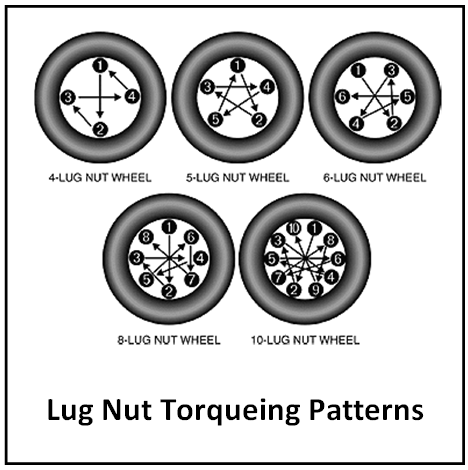
Listed below are popular wrench models with ranges that cover most of the specified torque values. Electronic torque wrenches provide maximum torque transmission accuracy.
For passenger cars, keys with a 1/2 square connection are used. The most popular wrenches are models with tightening up to 200-210 Nm, for example, wrenches with a range of 28-210 or 42-210. Below are examples of such keys.
For commercial vehicles, keys with a connecting square of 1/2, 3/4 and even 1 inch are used. Below are key options for buses, commercial vehicles and trucks.
AIST has a wide range of professional wrenches for various threaded connections. With us it is always possible to find the necessary torque wrench for a car, both for cars and for trucks.
*The values of the tightening torque tables are for informational purposes, without reference to any GOST.
Useful articles: